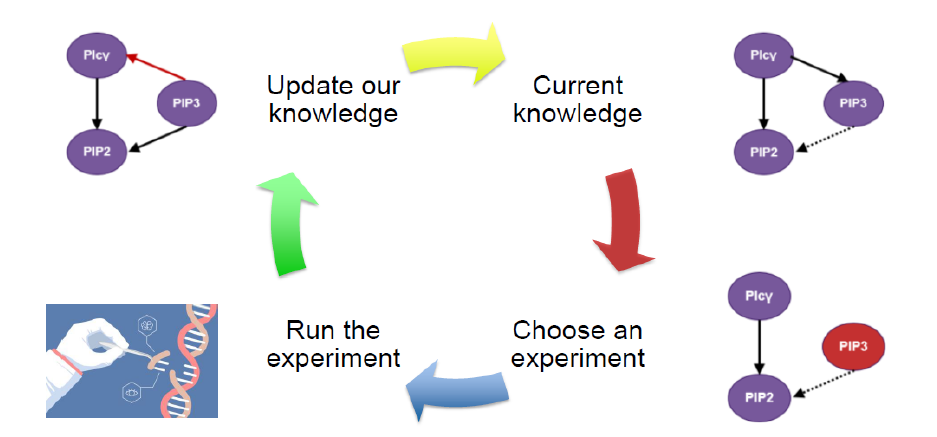Code repositories for the projects described below can be found on Github.
My doctoral research focused on two different topics: (1) statistical methods for environmental health and epidemiology, and (2) experimental design methods for inferring causal structure. I am also involved in collaborations with Dr. Theresa Chen’s research group at Massachusetts Eye and Ear to investigate how three-dimensional imaging of the eye can be used to detect glaucoma progression.

It is becoming increasingly clear that environmental exposures early in life have the potential to set the health trajectory for the rest of your life. My research has focused on statistical methods for identifying windows of susceptibility to environmental exposures – that is, time periods when there is a significant association between an exposure and an adverse health outcome.
In particular, I have focused on the effects of prenatal exposure to air pollution on human health. Inhaling these particles can cause downstream changes in the epigenome, the chemical signals that regulate how genes are expressed. Depending on the timing of these shocks, epigenetic modifications could lead to abnormal organ development and potentially cardiovascular and respiratory problems. These detrimental effects are not limited to the person who directly inhales the air pollution; a developing fetus can be exposed prenatally when the air pollution a pregnant mother inhales triggers a cascade of inflammatory chemical signals that are passed to the fetus via the placenta. My work on function-on-function regression and sparse canonical correlation analysis aims to identify regions in the epigenome and time periods during pregnancy when these potentially harmful developmental changes occur.
Conference poster: Joint Statistical Meetings 2018
Publications
-
Zemplenyi M, Meyer MJ, Cardenas A, France-Hivert M, Rifas-Shiman SL, Gibson H, Kloog I, Schwartz J, Oken E, DeMeo DL, Gold DR, Coull BA. (2021). Function-on-Function Regression for the Identification of Epigenetic Regions Exhibiting Windows of Susceptibility to Environmental Exposures. To appear in Annals of Applied Statistics; arXiv pre-print.
-
Zhong J, Karlsson O, Wang G, Li J, Guo Y, Lin X, Zemplenyi M, Sanchez-Guerra M, Trevisi L, Urch B, Speck M, Liang L, Coull BA, Koutrakis P, Silverman F, Gold DR, Wu T, Baccarelli AA. (2017). B vitamins attenuate the epigenetic effects of ambient fine particles in a pilot human intervention trial, PNAS, 114(13), 3503-3508.
-
Zemplenyi M, Coull BA. Sparse canonical correlation analysis with applications in molecular environmental epidemiology. In progress.
-
Oppenheimer A, Bellinger D, Coull BA, Weisskopf M, Zemplenyi M, Korrick SA. Prenatal exposure to chemical mixtures and inhibitory control among adolescents in the New Bedford Cohort. In progress.

The goal of this work is to help researchers save time and resources by optimizing the experimental process. This is especially useful for biological applications in which a scientist wants to use gene-knockout experiments to learn about the regulatory relationships operating within a gene network. Different experiments yield different amounts of information about the system being studied; the Bayesian optimal experimental design approach that my advisor, Jeff Miller, and I developed identifies the next best experiment to run given any prior results and knowledge about the system. By iterating between experimentation and analysis, and updating knowledge along the way, this cyclical approach maximizes learning and discovery.
- Conference poster: Joint Statistical Meetings 2019
Publications
-
Zemplenyi M, Miller JW. (2021). Bayesian optimal experimental design for inferring causal structure. Under review in Bayesian Analysis; arXiv pre-print.
-
Zemplenyi M. (2013). Design and analysis of a fractional factorial screening experiment to identify small molecule inducers of pancreatic beta cells. Undergraduate thesis.
-
Ratanawongphaibul K, Tsikata E, Zemplenyi M, Lee H, Margeta MA, Ondeck CL, Kim J, Pan BX, Petrakos P, Coleman AL, Yu F, de Boer JF, Chen TC. (2021). Earlier detection of glaucoma progression using high-density 3D spectral-domain optical coherence tomography optic nerve volume scans. Ophthalmology Glaucoma. doi.org/10.1016/j.ogla.2021.03.010.
-
Margeta MA, Ratanawongphaibul K, Tsikata E, Zemplenyi M, Ondeck CL, Kim J, Coleman AL, Yu F, de Boer JF, Chen TC. (2021). Disc hemorrhages are associated with localized three-dimensional neuroretinal rim thickness progression in open-angle glaucoma. Under review at American Journal of Ophthalmology.
-
Zurayk LF, Cheng KL, Zemplenyi M, Burke A, Dillon JK. (2019). Perceptions of sexual harassment in oral and maxillofacial surgery training and practice. Journal of Oral and Maxillofacial Surgery. doi.org/10.1016/j.joms.2019.08.019.
-
Zemplenyi M, Wei L. (2019). Quantifying the treatment effect of drug-eluting stents optimized for biocompatibility vs bare-metal stents with a single month of dual antiplatelet therapy. JAMA Cardiol. 4(5):494. doi:10.1001/jamacardio.2019.0546.